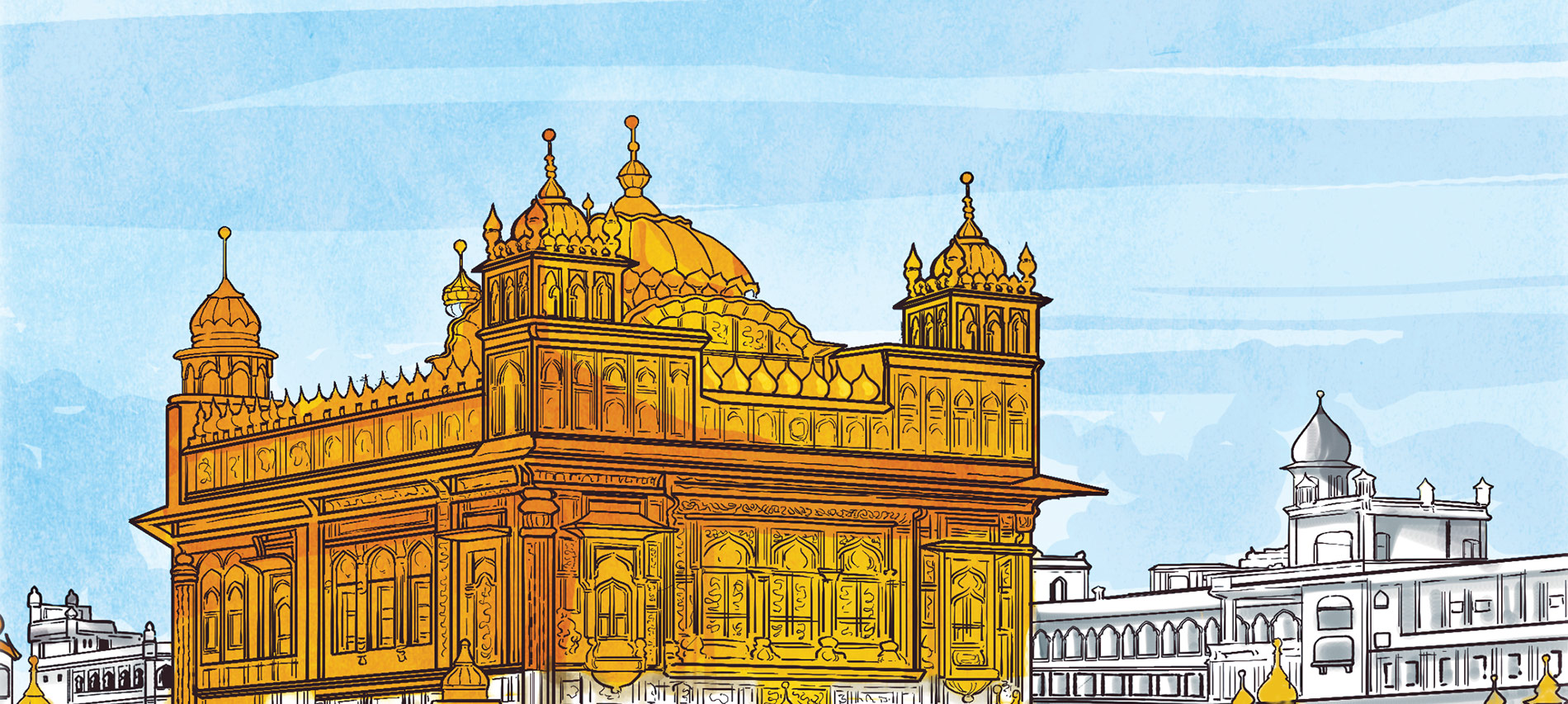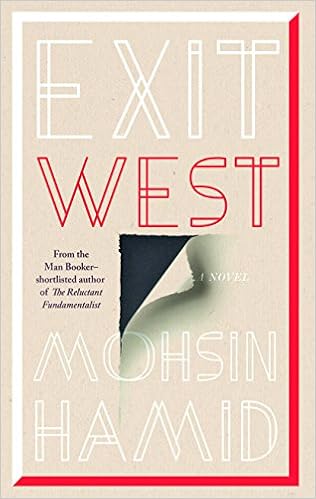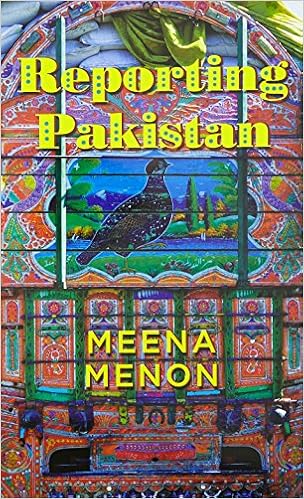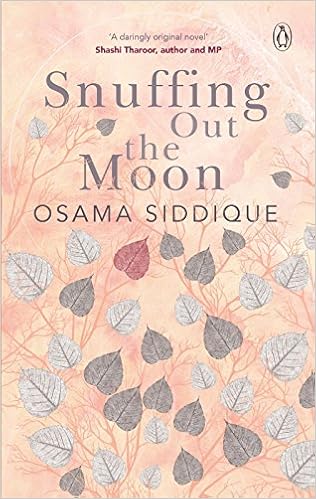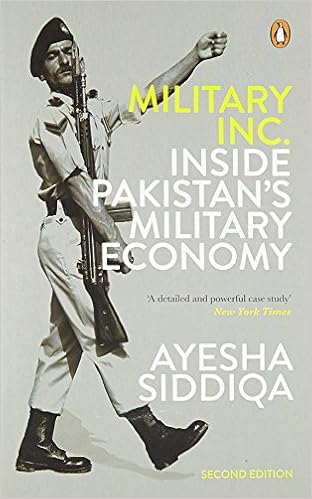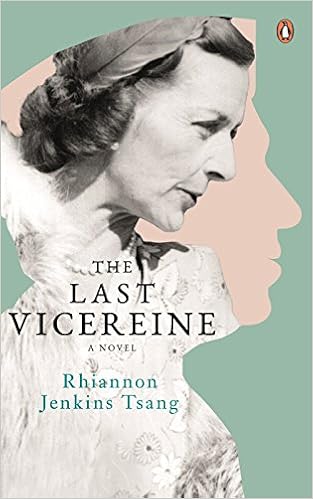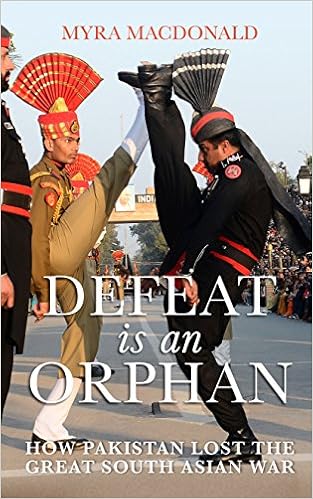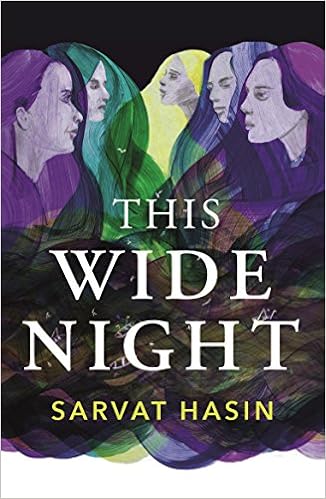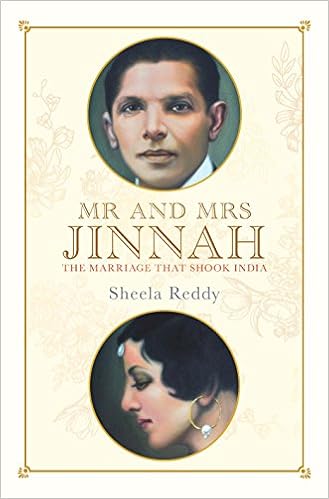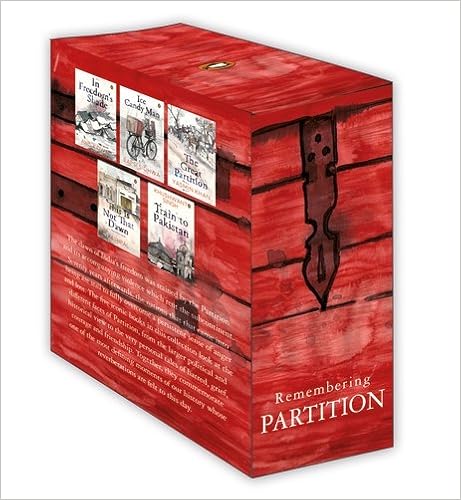Sindhis have braved adversities like Partition, fled from one nation to another and weathered ups and downs in the economy and have yet set up some of the biggest companies in the world with the help of their sharp business acumen.
In Paiso, Maya Bhatija captures the stories of five companies, built painstakingly by many generations by five Sindhi families.
Here are three families who show how the Sindhi way of doing business has led them to success:
Harish Fabiani, Americorp Ventures and India Land Properties

Jitu Virwani, Embassy group

Ramola Motwani, Merrimac Ventures

Aren’t these stories inspiring?

Tag: featured
Let’s Revisit the Golden Temple with Amma and Her Boys!
Remember when Bhakti Mathur and her boys took you and your little one on an enchanting journey to Amritsar’s Golden Temple? The beautiful architecture of one of the holiest places for Sikhs, the delectable langar served after prayers, a dip in the holy sarovar — Amma and her boys take you through an experience that stays with you forever.
Let’s take you through the Golden Temple once again through the pages of Amma, Take Me to the Golden Temple.
The rich history of the Golden Temple that stands tall for decades

The yummy taste of the karah prasad!

The peace and calm of the glorious inner sanctum

Taking a dip in the holy water facing Harmandir Sahib

The exquisite, golden palanquin carrying the Guru Granth Sahib

The history of the Golden Temple comes alive with the stunning illustrations in Bhakti Mathur’s Amma, Take Me to the Golden Temple.
Now get ready to join Amma and her boys on an exciting trip to the famous Tirupati! Pre-order your copy today!

Meet the Characters from ‘Bheem’
Jyotin Goel in Bheem has created a fascinating amalgamation of mythology and adventure in the modern setting. The plot of the book revolves around a deadly threat which has arisen from the ancient battlefields of Lanka and Kurukshetra. Ripping through the vortex of time, Bheem arrives in the twenty-first century to combat this crisis. But to make sure of his failure, a sworn enemy from the past-Ashvatthama-has also journeyed to the present.
Here are some of the characters from the riveting novel:





Don’t wait anymore, pick up Jyotin Goel’s Bheem now!

How Did the Don Become the Master Baker?
Raja Sen’s The Best Baker in the World opens up the world of cult (and sometimes controversial) films to children and their parents, as Sen’s tribute to Francis Ford Coppola’s The Godfather, comes visually alive with the stunning illustrations done by Vishal K. Bharadwaj. But what is the secret recipe that went into the making of this amazing, one-of-a-kind book?
Raja Sen and Vishal Bharadwaj spill the beans!
Where did the thought of adapting a cult-film into a book for children come from?
Raja: Great stories transcend boundaries. Children routinely read adaptations of classic novels and Shakespeare plays, and I strongly believe cinematic masterpieces are as fundamentally strong as those texts. I thought it would be fascinating to see if a mature, R-rated film can retain its narrative appeal without the ‘adult’ elements — the blood and violence and sex — and if we could still pay tribute to the iconic and memorable aspects of the original film. The characters, the moments, the drama, all of that still remains even if the stakes aren’t fundamentally tied to violence and war. The thing we must remember is that if told right, the popping of a water balloon can feel as momentous in a story as the assassination of a character.
Vishal: When Raja approached me to illustrate the project, two things were set in stone: that these would be ‘adult’ films i.e. ones that only they should watch, as opposed to all-ages classics or PG-13 level movies that a child might be exposed to with the right guidance; and second, that we wouldn’t do a shot-for-shot, beat-by-beat representation of the films. This transformative quality is what really intrigued me about the project.
Why a baker, and not any other profession, for your protagonist who happened to be the head of a mafia in the original?
Raja: More than anything, The Godfather is a film about family — a family business, if you will. It is also a specifically Italian family film, which means food features heavily. Thus I wanted to adapt it around a family business about food, and a bakery seemed both appropriate for the task and appropriately inviting for a children’s setting. As a bonus, my illustrator Vishal Bhardwaj loves cooking and photographing food, and I knew he’d draw mouthwatering pastry.
Vishal: Fairly early on I asked Raja if we could concentrate the setting of the book down to a single street or neighbourhood (the movie takes place across multiple countries and cities), since we were telling an intimate story of families. The term ‘godfather’ denotes a certain protector status, someone you turn to for guidance & comfort. So we thought of similar pillars of a community, the kind who would always be there for you and make you feel better. Also, since I have a penchant for food, a bakery, with all its warmth and the aromas of its fresh baked goods filling the neighbourhood, was the perfect fit.
How difficult was it to dress up The Godfather as a bird who’s a baker?
Vishal: The process took a couple of weeks to go from Brando to bird. Plenty of exploratory sketches, starting with straight renditions of Brando himself, then trying on different animal ‘skins.’ During the research phase I read that Brando thought of Don Corleone as an old bulldog, so he added in the now-famous jowly look to the character. A bulldog version of our Don was tried, but he didn’t vibe with our baker’s character. Finally, after hogs & lions and other beasts, he took the form of a bird, a wise owl. There was the right gentleness to him now, but when Raja saw me draw his wings as delicate arms that manipulated pastry, he asked me to change them to more formidable, warmly enveloping wings almost as huge as the rest of him, and the physical character was complete.
As far as actually dressing him, we moved away from the iconic tuxedo. He is a baker after all, so an apron was appropriate, and rolled up sleeves with a bowtie (he’s still dapper, not sloppy!). I put in a subtle nod to a contemporary chef I like, Mario Batali, who is known for wearing shorts and Crocs sandals under his apron. But because our Don is more old-school (and Raja, like myself, appreciates a good pun), did away with the Crocs and instead gave our big bird a pair of classic wing-tip brogues.
What are the other cinematic masterpieces being retold for children in this series?
Raja: We’re looking at taking on several mature, memorable films and recreating what made them special while setting them in an entirely different (and wholly innocent) world. Next up is a homage to Danny Boyle’s Trainspotting, a highly explicit and wild film about addiction, and one of my favourite films of the 90s. Others on the list include some of the most quotable films of all time, as well as a particularly scandalous one by Stanley Kubrick.
Vishal: I hadn’t seen The Godfather before saying yes to The Best Baker in the World (as it came to be called. For a long time we referred to it as ‘Project Cannoli’). The running joke of-late has been that whatever we end up doing, if it’s a film I haven’t seen before taking the adaptation on, we must be on the right track! Raja has dropped some intriguing names into the hat, from sprawling epic classics to mind-bending modern gems. I’m excited to visually interpret any of these.
Fascinating, isn’t it? Do you still need any more convincing to pick up this marvellous book not just for your little one, but yourself too!

The Life Cycle of an Innovation
R. Gopalakrishnan has been a professional manager for forty-two years and is an expert on practical managerial experience. In his book A Biography of Innovations he defines thought as the ancestor of innovation. He further argues that the life cycle of an innovation is similar to that of a human being.
Here’s how he equates the life cycle of an idea to that of humans:








Fascinating, isn’t it?

5 Things You Should Know About the North-East of India
The Last Battle of Saraighat looks at Assam as a case study to explain the rise of the BJP in the North-east and throws light on the key political issues of the region. In this book, Rajat Sethi and Shubhrastha outline the political history of the north-east region of India and provide details of election strategies employed by the Bharatiya Janta Party to win the 2016 Assam legislative assembly elections.
Here are five things you should know about the northeastern part of the country:





Fascinating, isn’t it?

Our #BooksNotBorders Bookshelf
Penguin Random House India’s superb collection of writers from the subcontinent focussing on Pakistan.
Exit West by Mohsin Hamid
Shortlisted for the Man Booker Prize 2017
Nadia and Saeed are two ordinary young people attempting to do an extraordinary thing—to fall in love—in a world turned upside down. Civil war has come to the city that they call home. Before long they will need to leave their motherland behind—when the streets are no longer usable and the unknown is safer than the known. They will join the great outpouring of people fleeing a collapsing city, hoping against hope, looking for their place in the world . . .
Pakistan at the Crossroads: Domestic Dynamics and External Pressures edited by Christophe Jaffrelot
The book examines the state’s handling of internal threats, tensions between civilians and the military; strategies of political parties; police and law enforcement reform; trends in judicial activism; the rise of border conflicts; economic challenges; financial entanglements with foreign powers; and diplomatic relations with India, China, Iran, Saudi Arabia, Afghanistan, and the United States.
Undying Affinity by Sara Naveed
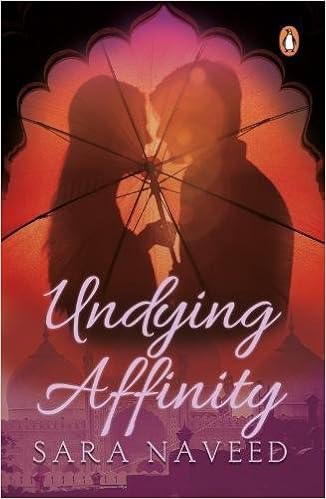
Rich, beautiful and popular Zarish Munawwar finds herself entangled in a web of passion with her attractive new professor, Ahmar Muraad, in this delicious new novel by the Pakistani queen of romance. Packed with romance, drama and tragedy, Undying Affinity will stay in your heart forever.
Reporting Pakistan by Meena Menon
Reporting from Pakistan is considered one of the more difficult-if exciting-assignments in journalism, more so for an Indian. Despite the limitations, Meena Menon, the Hindu’s correspondent in Islamabad until May 2014, has produced a probing, incisive portrait of a conflicted society; it is both nuanced and wide ranging and tries to look not just at politics-but also at the human realities beneath.
The Golden Legend by Nadeem Aslam
Against a background of violence and fear, the protagonists of The Golden Legend try to find an island of calm in which their love can grow. In his characteristically luminous prose, Nadeem Aslam reflects Pakistan’s past and present in a single mirror—a story of corruption, resilience and the hope that only love and the human spirit can offer.
Lahore in the Time of the Raj by Ian Talbot and Tahir Kamran
Lahore during the Raj was a prosperous and cosmopolitan place, where many communities lived together and there was a constant flow of goods, people and ideas. Talbot and Kamran bring to life the 1930s and 1940s, a time of intense cultural and political creativity where writers and artists flourished; where F.C. College and Government College were celebrated centers of learning and there was great engagement between Lahore and the nascent Bollywood film industry, unfortunately ended by the traumas of Partition.
Snuffing Out the Moon by Osama Siddique
2084 bce: In the great city of Mohenjodaro, along the banks of the Indus, a young man named Prkaa becomes increasingly mistrustful of the growing authority of a cult of priests.
2084 ce: A scholar revisits the known history of the cataclysmic events that led to world domination by ruthless international water conglomerates.
Spanning across epochs and civilizations, the characters in this stunning novel investigate the legitimacy of religion and authority and chronicle the ascent of dissent. Snuffing Out the Moon is a dazzling debut that is at once a cry for freedom and a call for resistance.
Military Inc.: Inside Pakistan’s Military Economy by Ayesha Siddiqa
Ayesha Siddiqa shows how the power of the military has transformed Pakistani society and where the armed forces have become an independent class. She examines this military economy and the consequences of merging the military and corporate sectors and analyses the internal and external dynamics of this gradual power-building and the impact that it is having on Pakistan’s political and economic development.
This House of Clay and Water by Faiqa Mansab
Set in Lahore, This House of Clay and Water explores the lives of two women: Nida, intelligent and lonely, has married into an affluent political family and is desperately searching for some meaning in her existence; and impulsive, lovely Sasha, from the ordinary middle-class, her longing for designer labels and upmarket places so frantic that she willingly consorts with rich men who can provide them. They meet at the famous Daata Sahib dargah and connect, their need to understand why their worlds feel so alien and empty, bringing them together. Faiqa Mansab’s accomplished and dazzling debut novel explores the themes of love, betrayal and loss in the complex, changing world of today’s Pakistan.
The Last Vicereine by Rhiannon Jenkins Tsang
Set amid the turmoil of Partition, The Last Vicereine is the heartbreaking story Edwina Mountbatten, a rebel, rule-breaker, troubled soul and great beauty, and Jawahar, her friend, confidant and the only one to truly understand her for who she was. It is also the incredible tale of the birth of two nations, of love, grief, tragedy, inhumanity and the triumph of hope.
Defeat is an Orphan: How Pakistan Lost the Great South Asian War by Myra Macdonald
This essential account by a former correspondent for Reuters and a South Asia specialist tracks the defining episodes in the relationship between India and Pakistan from 1998, from bitter conflict in the mountains to military confrontation in the plains, from the hijacking of an Indian airliner to the Mumbai attacks.
This Wide Night by Sarvat Hasin
In the quietly seething world of This Wide Night, The Virgins Suicides meets Little Women in Pakistan. Tracing the lives of the four beautiful Malik sisters, Maria, Ayesha, Leila and Beena in the 1970s, and moving from Karachi to London to the rain-drenched island of Manora, here is a compelling new novel from the subcontinent—and a powerful debut to watch.
Mr and Mrs Jinnah: The Marriage that Shook India by Sheela Reddy
Mohammad Ali Jinnah was forty years old, a successful barrister and a rising star in the nationalist movement when he fell in love with pretty, vivacious sixteen-year-old Ruttie Petit, the daughter of his good friend, the fabulously rich baronet, Sir Dinshaw Petit, a prominent Parsi mill owner. Despite her outraged father forbidding the match, they married when Ruttie turned eighteen and Bombay society, its riches and sophistication notwithstanding, was scandalized. A product of intensive and meticulous research in Delhi, Bombay and Karachi and based on first-person accounts and sources, Reddy brings to life the unforgettable love story of the solitary, misunderstood Jinnah and the lonely, wistful Ruttie.
Indus Divided: India, Pakistan and the River Basin Dispute by Daniel Haines
The Indus Waters Treaty is considered a key example of India–Pakistan cooperation, which had a critical influence on state-making in both countries. Indus Divided reveals the importance of the Indus Basin river system, and thus control over it, for Indian and Pakistani claims to sovereignty after South Asia’s partition in 1947, and examines the discord at local, national and international levels, arguing that we can only explain its significance and longevity in light of India and Pakistan’s state-building initiatives after independence.
Pakistan’s Nuclear Bomb: A Story of Defiance, Deterrence and Deviance by Hassan Abbas

This book provides a comprehensive account of the mysterious story of Pakistan’s attempt to develop nuclear weapons in the face of severe odds. Hassan Abbas profiles the politicians and scientists involved, and the role of China and Saudi Arabia in supporting Pakistan’s nuclear infrastructure. Abbas also unravels the motivations behind the Pakistani nuclear physicist Dr A.Q. Khan’s involvement in nuclear proliferation in Iran, Libya and North Korea, drawing on extensive interviews.
Remembering Partition: Limited Edition
The dawn of India’s freedom was stained by the Partition and its accompanying violence, which rent the subcontinent. Seventy years later, the nations that came into being are still to fully overcome a persistent sense of anger and loss. The five iconic books in this collection look at the different faces of Partition, from the larger political and historical view to the very personal tales of hatred, grief, courage and friendship. Together, they commemorate one of the most defining moments of our history whose reverberations are felt to this day.
Ice-Candy-Man by Bapsi Sidhwa
Young Lenny Sethi enjoys a happy, privileged life in Lahore in the 1940s. Kept out of school because she suffers from polio, she spends her days with Ayah, her beautiful nanny, who attracts several admirers. But with the abduction of her beloved Ayah, Lenny’s world soon erupts in racial and religious violence. Widely hailed as one of the most powerful novels on the Partition, Ice-Candy-Man offers an intimate glimpse into a colossal upheaval through the eyes of a precocious child.
In Freedom’s Shade by Anis Kidwai
In Freedom’s Shade is Anis Kidwai’s moving personal memoir of the first two years of new India. With a rare frankness, sympathy and depth of insight, Kidwai tells the stories of the thousands who were driven away from their homes in Delhi and its neighbouring areas by eviction or abduction or the threat of forced religious conversion. Recounting the activities of the Shanti Dal and the recovery of abducted women, she reveals both the architecture of the violence during Partition as well as the efforts of ordinary citizens to bring to a close the cycle of reprisal and retribution. This searching book is a reminder that memory without truth is futile; only when it serves the objective of reconciliation does it achieve meaning and significance.
The Great Partition by Yasmin Khan
The Partition of India in 1947 was one of the most horrific events of decolonization in the twentieth century, bringing death, rape and plunder in its wake. In The Great Partition, Yasmin Khan exposes the widespread ignorance of what the Partition would entail in practice as well as the haste and recklessness with which it was completed. Drawing on fresh information from an array of sources and underscoring the catastrophic human cost involved, Khan provides an authoritative and accessible analysis of this cataclysmic event and its devastating legacy.
Jhootha Sach by Yashpal
Jhootha Sach is arguably the most outstanding piece of Hindi literature written about the Partition. Vividly evoking life in Lahore as it was before 1947, the novel abounds with a rich array of characters whose lives unfurl dramatically in the city’s crowded streets: Tara, who wants an education, and not marriage; Puri, whose ideology and principles often come in the way of his impoverished circumstances; Asad, who is ready to sacrifice his love for the sake of communal harmony. Their destinies are irrevocably altered on the eve of Independence when the ensuing carnage shatters the beauty and peace of the land, killing millions of Hindus and Muslims, and forcing others to leave their homes forever.
Spectacular in scope and deeply insightful in its depiction of human frailty and malice, Yashpal’s controversial novel is a politically charged, powerful tale of human suffering.
Train to Pakistan by Khushwant Singh
The fact is both sides killed. Both shot and stabbed and speared and clubbed. Both tortured. Both raped.
It is the summer of 1947. But Partition does not mean much to the villagers of Mano Majra, a village on the border of India and Pakistan. Then, a local moneylender is murdered, and suspicion falls upon Juggut Singh, the village gangster who is in love with a Muslim girl. When a train arrives, carrying the bodies of dead Sikhs, the village is transformed into a battlefield and neither the magistrate nor the police is able to stem the rising tide of violence. Amidst conflicting loyalties, it is left to Juggut Singh to redeem himself and reclaim peace for his village.
So, which book are you going to pick?
Meet Rishi Mathur—An Excerpt from ‘Love Curry’
Pankaj Dubey is the bestselling author of —’What A Loser!’, ‘Ishqiyapa—To Hell with Love’. His latest book ‘Love Curry’ is about three flat mates in London who fall in love with the same girl. This make them arch-rivals but when things take a turn, they don’t find anyone else but eachother to turn to.
Here’s an excerpt from the book which introduces you to one of the flat mates.
He came from Agra—the city of the Taj Mahal, a monument that stood for a timeless love. A monument that simply kept standing when his love had wandered off. No wonder he had left the city and its Mahal. Choosing England instead with all its apparent coldness. He wanted to be away from all that had always been with him. No one knew him here or cared to. But there was a comfort in this anonymity. It was only months after he shifted to house number 104, George Street, that some of his neighbours began to recognize him, or what little they saw of him. For he would leave in the morning and return only after it got dark. He could have been the night watchman for all they knew. No words he exchanged with anyone. No twitch of a smile to a face that looked familiar. His socializing was restricted to giving someone way if they were in a rush.
His name was Rishi Mathur, the guy whose door was locked. The occupant of the third room in house number 104. A house that was almost a subcontinent, harbouring as it did three South Asian boys, flying the flags of India, Pakistan and Bangladesh. Besides the Indian—Rishi—docking in the house were Shehzad from Dhaka and Ali from Lahore.
Rishi in Agra had been quite a talkative fellow. This was a different version. No, the Queen wasn’t to blame for this sudden, sullen silence. At the heart of the matter was a breakup. One he was finding difficult to chew. So he went quiet and fled to England. He had seen people go to London to study or to get rich. But he came to recover. People arrived here with big dreams. He landed with promises—three promises that he’d made to himself. Three promises that were perhaps the opposite of what any other immigrant from India would have made
The first was to stay away from girls—especially the beautiful ones. He could not trust them now.
The second vow was to never return home. He would do all it took to make this island nation his new home. There was nothing waiting for him in India—and absolutely no one that mattered to his broken heart.
Thirdly, he would lie low. No soaring aspirations for him. No growth, no riches. He would not be the next British-Indian industrialist or Indian lord in Parliament. All he would be was a nobody.
It was easy to do the third thing. He simply didn’t need to do much. The limelight ignored him automatically. High denomination pounds stayed away. The few notes he earned kept hopping in and out of his wallet. The heartbroken hero strived for no comeback as a happy success story. All he wanted and got was a corner seat in life.
No one knew what Rishi did, not even his two housemates. Shehzad from Dhaka and Ali from Lahore lived in the same house with him, but in blissful ignorance. Each one had a story of his own that each wished to keep to himself. Though they shared a subcontinent and now a house, the three were reluctant to overlook the fact that they came from three different countries. This fourth country that they came to live in however threw them together in more ways than one. For starters, they got branded ‘Bloody Pakis’ the second they set foot here!
In their three-bedroom house, the room in the middle went to Rishi. Shehzad occupied the one to his left. The Bangladeshi was almost twenty-three, but still had a somewhat wild streak, which was announced by the sheer number of tattoos covering his five-foot-eight-inch frame. No, he didn’t need them to enhance his looks—he had plenty of those already. His angular face and curly fringe were a photographer’s dream. The decoupage tattoos advertised the person he was—a question mark. No one knew what he would say or do next, not even Shehzad. Only one thing was reasonably clear— rehab would figure somewhere in his future! For, the fellow smoked up relentlessly.
What made him so unpredictable was an even bigger mystery. No one knew the painful backstory. It featured a father who was an airline pilot in his home country. But that was before he lost one of his limbs in a ground accident. The tragedy, however, didn’t end there. His mother eloped soon after, forsaking his father for another pilot who was a friend of the family. The six-year-old boy was left behind with a handicapped father, a pit of a future and so many wagging tongues.

5 Tips in Which You Can Tone Your Life
Venugopal Acharya is a practicing monk at the ISKCON. In his book Are You Connected, he shares the different skills and experiences that help one feel loved and in touch with one’s self, the people who matter and God. He also highlights the need to delve deeper into the meaning and purpose of life and gives tools to achieve peace of mind.
Here are five tips from the book which will help you connect with you true self.





Tell us how you are toning your life.

Things You Need To Know About Ravi Subramanian
An author, a banker, a columnist — Ravi Subramanian dons many hats and juggles multiple roles successfully while writing amazing books! Subramanian has not only written several books on his area of expertise — money, but also recently, a gripping thriller. Ravi Subramanian is definitely a man of many moods.
But did you know these facts about the author of In the Name of God?





And now, Ravi Subramanian is ready with yet another book on money, this time, for his younger readers. We know you’re super excited about My First Book of Money too!









